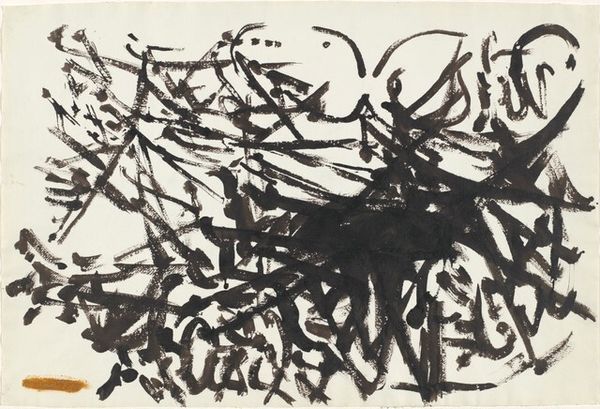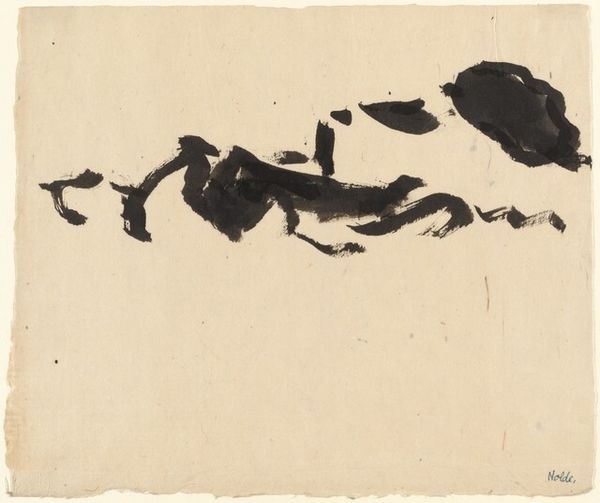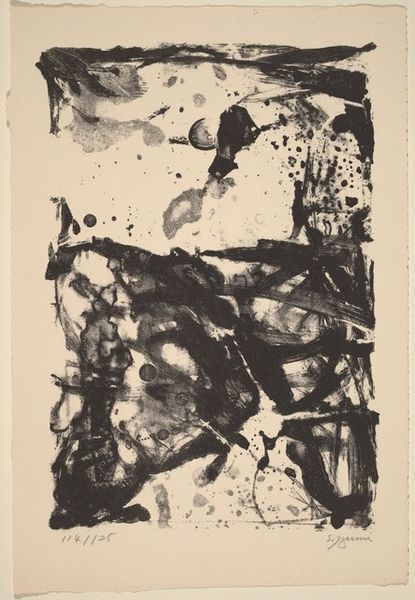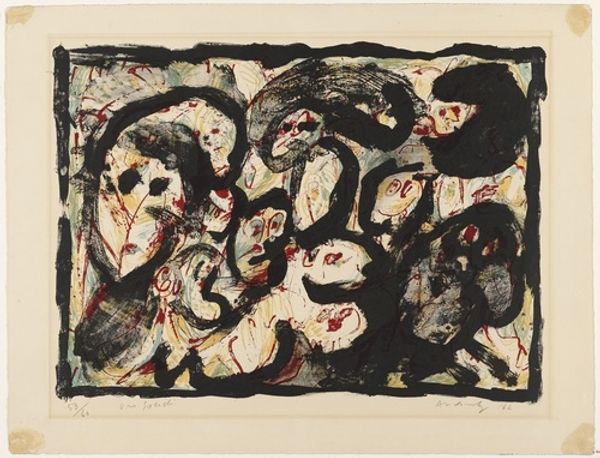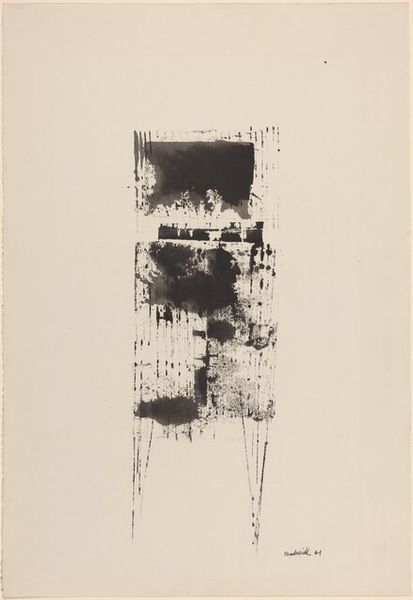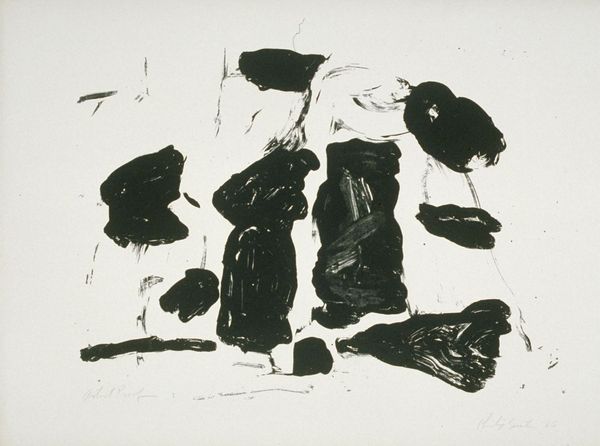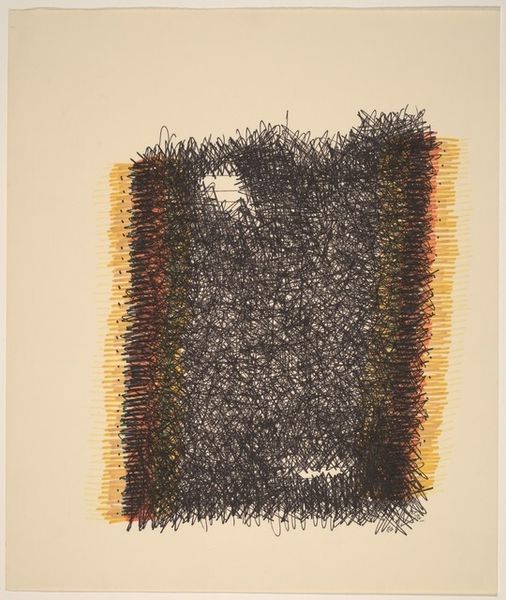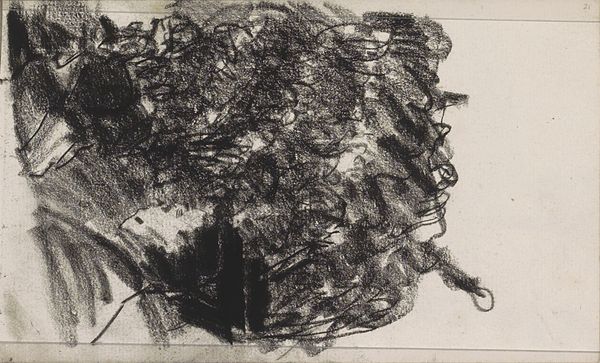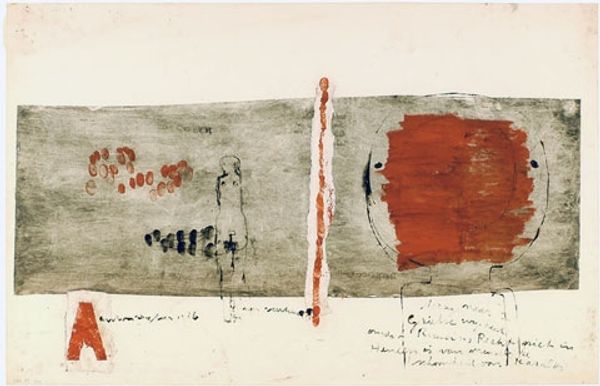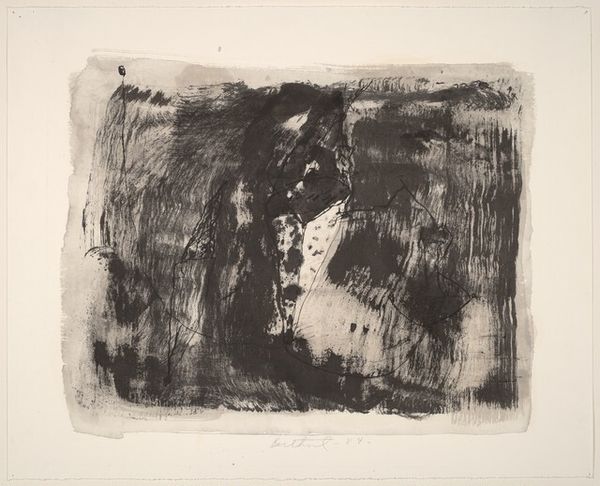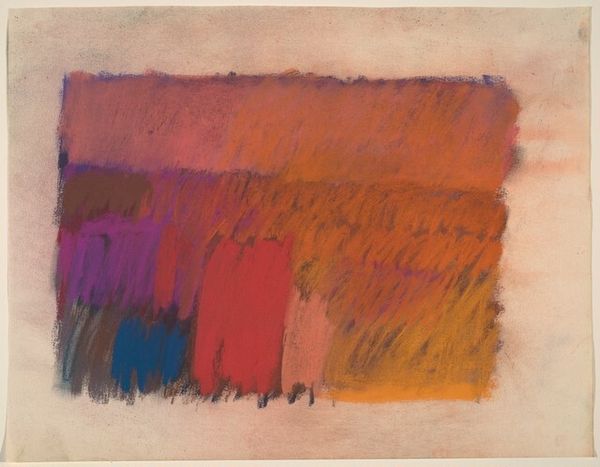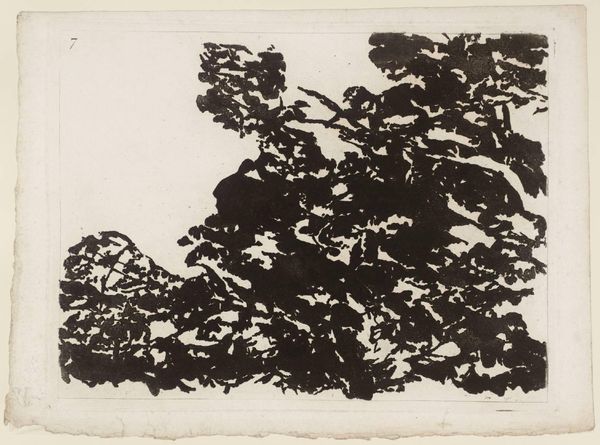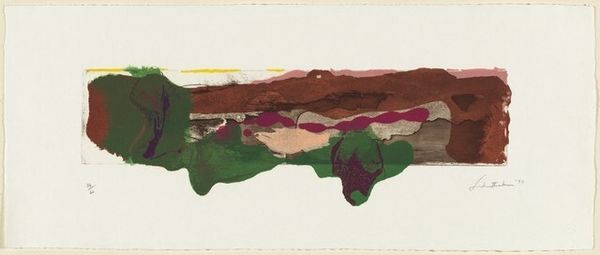
Dimensions: 7 7/8 x 15 3/4 in. (20 x 40.01 cm) (image)15 3/8 x 19 3/4 in. (39.05 x 50.17 cm) (sheet)
Copyright: No Copyright - United States
Curator: What a whirlwind of figures! It has an ephemeral quality, as if they could all dissolve at any moment. Editor: Precisely. Here we have Pierre Bonnard’s "Au Theatre," a color lithograph from around 1897 to 1899. Look at how he's captured a cross-section of Parisian society at the theater. You can almost feel the excitement in the air. Curator: It’s quite interesting that he chose lithography, usually a commercial process, to depict what might be considered an "elite" scene. I’m curious about his access to resources like special paper or inks that would have given this print a rarefied status? What decisions went into making that kind of social and material statement? Editor: Absolutely, let's delve into that. Beyond just a scene, Bonnard hints at the social dynamics at play, a world of observation and performance—consider the female figure front and center, how are they constructed, and for whom? It highlights themes of looking, visibility, and representation central to Impressionism at the time, but also resonates with larger issues of social hierarchies, wealth distribution, and what we might term the male gaze within entertainment venues of the Belle Époque. Curator: The layering is remarkable, the textures almost vibrating. It’s very rich tonally, especially considering it’s a print! What can we say about his printing technique? Editor: Definitely, Bonnard’s adeptness with lithography really comes through. But his impressionistic lens prompts deeper thoughts about performativity of high and low society, especially through women. By layering techniques such as color blending, how could this capture an honest look into their true state? The question is: could we view this piece to consider it pushing an early-feminist stance? Curator: That's fascinating, bringing gender studies to bear upon the piece, rather than simply a portrait. The subject is further blurred, becoming secondary to a greater discussion of identity and agency. Thank you, I find that approach very informative. Editor: Always a pleasure to open up new interpretive avenues! We hope this has illuminated "Au Theatre" for you.
Comments
No comments
Be the first to comment and join the conversation on the ultimate creative platform.
